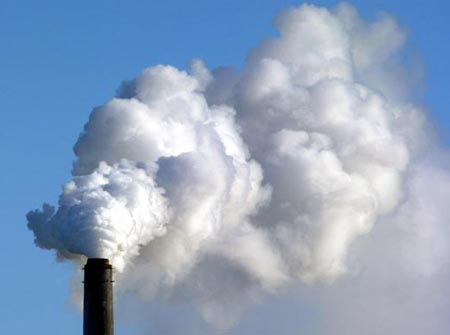Japan: Turn CO2 into natural gas
The Japan Ocean Research and Development Agency has embarked on the development of a technology to turn carbon dioxide (CO 2 ) emissions into methane natural gas, by pumping CO 2 into the seabed coal mine and "thanks to "Special microorganisms there convert carbon dioxide into natural gas.

Pumping CO2 into the ground to reduce greenhouse gas emissions has been implemented by many countries, but Japan is the first country to experiment with turning CO 2 into energy.
The coal mine off the Shimokita Peninsula in Aomori Prefecture has been chosen as a place to bury CO2. At a depth of 2,000-4,000m under the seabed, the coal layer with low calorific value (called lignite) in this area is very large and in an empty state, easily absorbing gases and liquids.
Since 2006, the Japan Marine Research and Development Agency has used the "Chikyu" underground survey ship to drill 650m deep in the seabed. They determined to have 'methane-producing bacteria' to turn CO 2 into methane.
Scientists have considered pumping CO2 into the lignite by means of a pipeline from a coal-fired power plant with a CO2-collecting device, then collecting methane gas to use it for that thermal power plant.
The current problem lies in the ability of bacteria to produce methane. Inside the ground, the transition from CO2 to methane takes between 100 million and 10 billion years.
The Japanese team aims to successfully develop the technique of improving the capacity of bacteria that convert CO 2 to methane within 100 years by effectively using substances in the next 3-5 years. nutrition from lignite.
The Japan Marine Research and Development Agency estimates that up to 200 billion tons of carbon dioxide can be pumped each year, which is 100 times more than Japan's CO2 emissions, down to the lignite floor stretching from Northeastern Japan. The village reaches the waters off Hokkaido Prefecture.
If this project is successful, in the future, Japan will be able to both handle CO 2 emissions, and also gain a huge source of natural gas.
- Japan exploits natural gas from burnt ice
- The biggest super typhoon Jebi in the past 25 years devastated Japan
- Yakushima Island - World Natural Heritage in Japan
- Japan uses sunflower plants to decontaminate soil
- Japan built equipment to simulate the phenomenon of water cannon
- World conference on disaster mitigation in Japan
- Japan launched a spy satellite
- Afraid of earthquakes, Japan wants to build a reserve capital
- 6.1 Richter earthquake in Japan
- Natural disasters look from the universe
- Mount Shirakami Sanchi
- Creating compounds that filter CO2 and turn them into materials for bottles and clothes
 Is the magnetic North Pole shift dangerous to humanity?
Is the magnetic North Pole shift dangerous to humanity? Washington legalizes the recycling of human bodies into fertilizer
Washington legalizes the recycling of human bodies into fertilizer Lightning stone - the mysterious guest
Lightning stone - the mysterious guest Stunned by the mysterious sunset, strange appearance
Stunned by the mysterious sunset, strange appearance